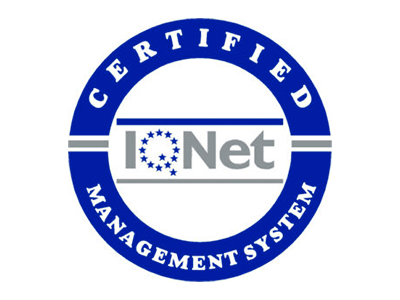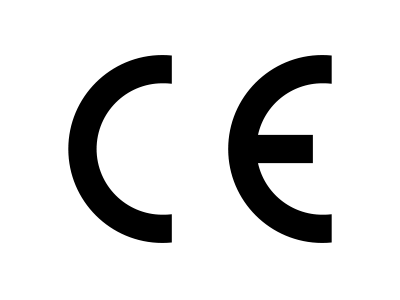Unleashing the Power of Social Listening: 5 Real-World Use Cases
March 22nd 2023

Uncover the power of social listening with 5 real-life cases that showcase its potential. From brand reputation management to product development, learn how companies are leveraging social media to better understand their customers, inform strategies, and stay ahead of the competition.
Are you tired of guessing what your audience wants and needs? Social listening could be the solution you’ve been seeking. By monitoring social media platforms and other online sources for mentions of your brand, competitors, and industry keywords, you can gain valuable insights to inform your marketing strategy. In this post, we’ll explore five real-world use cases of social listening that can help you unleash its power. From tracking customer sentiment to identifying emerging trends and influencers, you’ll discover how social listening can help you stay ahead of the curve and deliver the content your audience craves. So, let’s dive in and see how businesses are supercharging their marketing efforts with social listening.
Understanding the Importance of Social Listening
Before we reveal the real-world use cases, let’s take a moment to understand why social listening is so important. With the ease of digital accessibility right now, customers are more vocal than ever before. They share their experiences, opinions, and feedback about brands on social media platforms, review sites, and forums. By listening to what your customers are saying, you can gain insights into their needs, preferences, and pain points. This, in turn, can help you create better products, services, and marketing campaigns that resonate with your audience.
Social listening is not just about monitoring your own brand mentions. It’s also about keeping a pulse on your industry, competitors, and emerging trends. By doing so, you can identify new opportunities, stay ahead of the curve, and gain a competitive advantage. Social listening is an ongoing process that requires a dedicated strategy, tools, and resources. However, the benefits are well worth the effort.
Real-World Use Case 1: Brand Reputation Management
One of the most common use cases of social listening is brand reputation management. By monitoring social media platforms for mentions of your brand, you can quickly identify any negative sentiments or complaints and address them in a timely manner. This can help you mitigate any potential damage to your brand reputation and maintain customer loyalty.
For example, if a customer posts a negative review of your product on Twitter, you can respond to their tweet and offer a solution to their problem. This not only shows that you care about your customers but also demonstrates your commitment to resolving issues. By addressing negative feedback publicly, you can also show other customers that you take their concerns seriously and are willing to go the extra mile to make things right.
Case study: Nestle
In 2010, Nestle faced a PR crisis when Greenpeace accused the company of sourcing palm oil from suppliers who were destroying rainforests and harming orangutans. The company received widespread criticism on social media platforms, which threatened to harm its brand reputation. To mitigate the negative impact, Nestle used social listening tools to track conversations about the crisis in real time and responded to them promptly. They also engaged with influencers and responded to negative comments on their Facebook page. The company was able to turn the tide and improve its reputation by demonstrating its commitment to sustainability and transparency.
Real-World Use Case 2: Product Feedback and Improvement
When you utilize social listening to monitor social media platforms for mentions of your products, you can gain a deeper understanding of what your customers like and dislike about them. This can help you identify areas for improvement and make data-driven decisions about product development.
For example, if you notice that customers are complaining about a certain feature of your product, you can use that feedback to improve the feature or remove it altogether. By making these changes based on customer feedback, you can create products that better meet their needs and preferences.
Case study: Atlassian
Atlassian’s project management platform, Jira, has a large and highly engaged user community. Atlassian uses social listening tools to monitor conversations about Jira on social media and user forums and uses this feedback to prioritize product development and make improvements that meet the needs of its customers. For example, the company has implemented several user-requested features in Jira, including improved search functionality and custom workflows, based on feedback gathered through social listening. By actively soliciting and acting on feedback from its customers, Atlassian has built a reputation for being customer-focused and responsive to their needs.
Real-World Use Case 3: Content Creation and Curation
Social listening can also help you create and curate content that resonates with your audience. By monitoring social media platforms for trending topics and hashtags, you can identify what your audience is interested in and create content that aligns with those interests.
For example, if you notice that a certain hashtag related to your industry is trending on Twitter, you can create a blog post or social media post that uses that hashtag and provides valuable insights on the topic. By doing so, you can attract new followers and establish yourself as a thought leader in your industry.
Case study: IBM
IBM has a strong presence on social media and uses topics and trends that are resonating with its audience to create content that is relevant and engaging. For example, IBM created a social media campaign called ‘The Cognitive Build’ to showcase its cognitive computing platform, Watson. The campaign featured a series of videos and articles that highlighted how Watson was being used to solve real-world business problems. The content was highly targeted to specific industries and was designed to educate IBM’s audience on the benefits of cognitive computing. The campaign was a success, generating significant engagement and helping to position IBM as a thought leader in the field of artificial intelligence.
Real-World Use Case 4: Crisis Management
Social listening is also critical for crisis management. When you monitor mentions of your business during a crisis, you can quickly identify any negative sentiment or misinformation and address it quickly. This can help you contain the crisis and maintain your brand reputation.
For example, if your company experiences a data breach, you can monitor social media platforms for mentions of your brand and respond to any concerns or questions that customers may have. By doing so, you can demonstrate transparency and accountability, which can help you regain customer trust.
Case study: United Airlines
In 2017, United Airlines faced a major crisis when a passenger was forcibly removed from an overbooked flight. The incident was captured on video and went viral on social media, causing widespread outrage and negative sentiment toward the company. United Airlines used social listening tools to track conversations about the incident in real-time and responded quickly with a public apology. The company also engaged with customers on social media and took steps to address the underlying issues that led to the incident. As a result, United Airlines was able to mitigate the negative impact of the crisis and rebuild trust with its customers.
Real-World Use Case 5: Competitive Analysis
If you want to find out what is working for your competitors then social listening is the key. By monitoring social media platforms for mentions of your competitors, their products, and their marketing campaigns, you can identify where they’re doing well and where they aren’t. This can help you make informed decisions about your own marketing strategy and gain a competitive advantage.
For example, if you notice that your competitor is running a successful social media campaign, you can analyze their strategy and use that information to improve your own campaign. By doing so, you can stay ahead of the curve and attract new customers.
Case study: Wendy’s
Wendy’s, the fast-food chain, is known for its witty and humorous social media presence. For example, when McDonald’s announced that it was switching to fresh beef, Wendy’s used social listening tools to track customer reactions and respond with a humorous tweet that went viral. This helped Wendy’s to position itself as a more innovative and customer-focused brand than its competitors.
Conclusion
From the case studies explored, it’s clear that social listening is a key component of any effective marketing strategy. For businesses looking to stay ahead of the competition and connect with their audience in a more meaningful way, it’s crucial to incorporate social listening into their marketing strategy. By doing so, they can better understand their audience’s needs and preferences, and tailor their messaging and content accordingly. This information can be used to improve brand reputation, product development, content creation, crisis management, and competitive analysis.
Take a closer look at our social monitoring tool powered by AI, which can help you track and analyze conversations about your brand and industry across social media platforms. With our tool, you can gain real-time insights into what your customers are saying, and use that information to improve your marketing strategy. Click here to learn more.
Ready to see what we can do for you?
In the right hands, artificial intelligence can take human performance to a hitherto unimaginable level. Are you ready for evolution?




